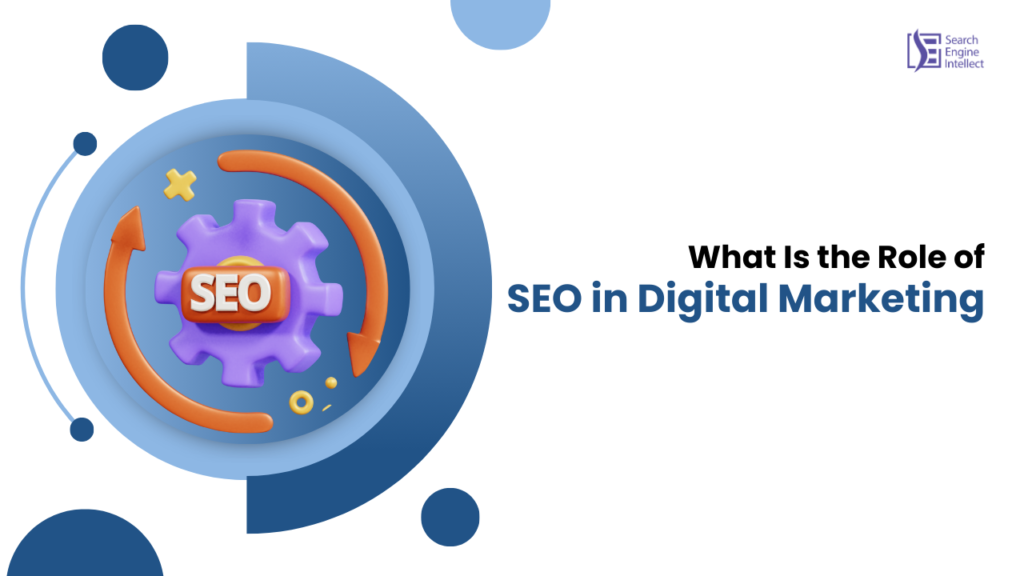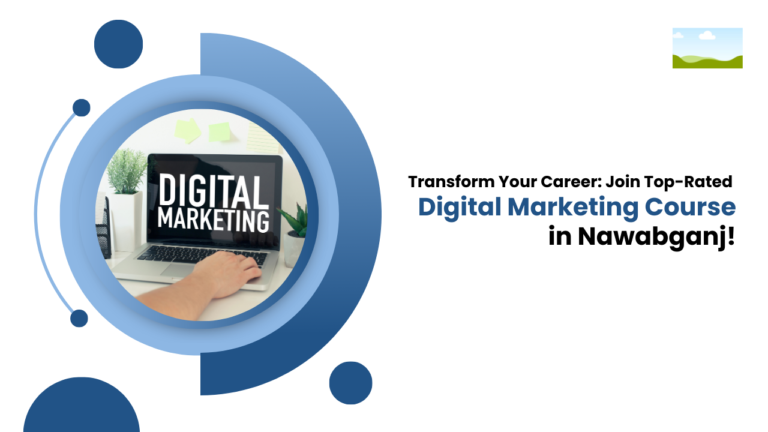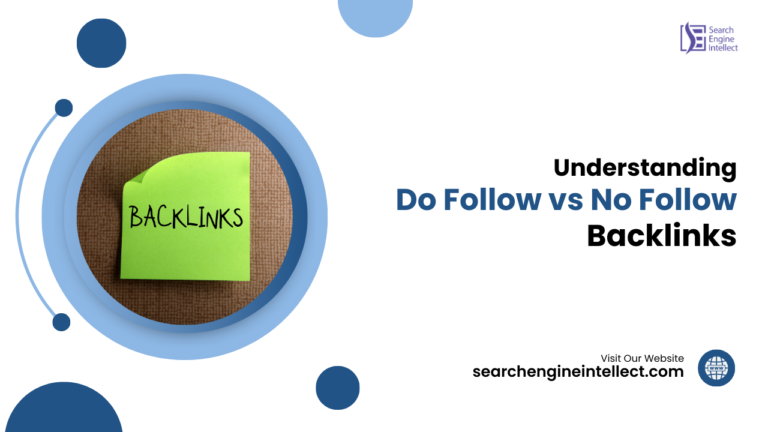Table of Contents
Book a Free Demo Class

What Is the Role of SEO in Digital Marketing?
In today’s digital landscape, where online visibility can make or break a business, Search Engine Optimization (SEO) plays a crucial role in digital marketing strategies. Understanding the role of SEO in digital marketing is essential for businesses aiming to enhance their online presence, attract targeted traffic, and ultimately increase conversions.
This comprehensive article will explore various aspects of SEO, its importance in digital marketing, and how it works, along with practical insights for businesses looking to optimize their online strategies.
What is search engine optimization (SEO)?
SEO is the process of optimizing a website and its content to rank higher in search engine results pages (SERPs), thereby increasing the quantity and quality of organic traffic to the site. This involves a combination of on-page optimization, off-page optimization, and technical optimization techniques.
What is SEO in digital marketing?
In the realm of digital marketing, SEO is a fundamental component that drives online visibility and traffic. It helps businesses connect with their target audience by ensuring that their content appears prominently in search results when users search for relevant keywords. SEO is not just about attracting traffic; it’s about attracting the right kind of traffic that can convert into customers.
Types of SEO

Search Engine Optimization (SEO) is a multifaceted discipline that encompasses various strategies and techniques aimed at improving a website’s visibility in search engine results. Understanding the different types of SEO is essential for creating a comprehensive SEO strategy that effectively drives organic traffic. Here are the 12 major types of SEO:
1. On-Page SEO
Definition: On-Page SEO refers to the optimization of individual web pages to improve their ranking in search engine results pages (SERPs).Key Elements:
- Keyword Research: Identifying relevant keywords to target.
- Content Optimization: Creating high-quality, relevant content that incorporates targeted keywords.
- Meta Tags: Optimizing title tags and meta descriptions for better visibility.
- URL Structure: Creating clean and keyword-rich URLs.
2. Off-Page SEO
Definition: Off-Page SEO involves activities conducted outside of the website to improve its authority and ranking.Key Elements:
- Backlink Building: Acquiring links from reputable websites to enhance credibility.
- Social Media Engagement: Promoting content on social media platforms to drive traffic.
- Influencer Outreach: Collaborating with influencers to increase brand visibility.
3. Technical SEO
Definition: Technical SEO focuses on optimizing the technical aspects of a website to improve its crawling and indexing by search engines.Key Elements:
- Site Speed: Ensuring fast loading times for better user experience.
- Mobile-Friendliness: Optimizing the website for mobile devices.
- XML Sitemaps: Creating and submitting sitemaps to help search engines understand site structure.
4. Local SEO
Definition: Local SEO targets local customers by optimizing a website for local search results.Key Elements:
- Google My Business: Creating and optimizing a Google My Business profile.
- Local Keywords: Incorporating location-specific keywords into content.
- Citations: Ensuring consistent business information across online directories.
5. E-Commerce SEO
Definition: E-Commerce SEO focuses on optimizing online stores to improve visibility and drive sales.Key Elements:
- Product Optimization: Optimizing product titles, descriptions, and images.
- Category Pages: Enhancing category pages for better navigation and visibility.
- User Reviews: Encouraging and managing customer reviews to build trust.
6. Video SEO
Definition: Video SEO involves optimizing video content to rank higher in search engine results pages (SERPs).Key Elements:
- Video Metadata: Optimizing titles, descriptions, and tags for videos.
- Thumbnails: Creating engaging thumbnails to improve click-through rates.
- Transcriptions: Providing transcriptions to enhance accessibility and keyword relevance.
7. Image SEO
Definition: Image SEO focuses on optimizing images on a website to improve visibility in image search results.Key Elements:
- Alt Text: Using descriptive alt text for images.
- File Names: Naming image files with relevant keywords.
- Image Compression: Reducing file size for faster loading times.
8. International SEO
Definition: International SEO optimizes a website to target audiences in different countries or regions.Key Elements:
- Hreflang Tags: Implementing hreflang tags to indicate language and regional targeting.
- Localized Content: Creating content tailored to specific markets.
- Currency and Language: Allowing users to transact in their local language and currency.
9. Voice SEO
Definition: Voice SEO focuses on optimizing content and website structure for voice search queries.Key Elements:
- Natural Language: Using conversational language in content to match voice search queries.
- Featured Snippets: Optimizing for featured snippets to increase visibility in voice search results.
- FAQs: Creating FAQ sections to address common voice search questions.
10. YouTube SEO
Definition: YouTube SEO involves optimizing YouTube videos and channels to rank higher in YouTube’s search results.Key Elements:
- Video Titles: Crafting compelling and keyword-rich titles.
- Channel Optimization: Optimizing channel descriptions and playlists.
- Engagement Metrics: Encouraging likes, shares, and comments to improve rankings.
11. Social SEO
Definition: Social SEO focuses on optimizing social media profiles and content to improve visibility and rankings in search engines.Key Elements:
- Profile Optimization: Ensuring social media profiles are complete and keyword-rich.
- Content Sharing: Promoting content across social media platforms to drive traffic.
- Engagement: Interacting with followers to build a community and increase visibility.
12. Content SEO
Definition: Content SEO emphasizes optimizing content on a website to improve its relevance and visibility in search engine results.Key Elements:
- Quality Content: Creating valuable and informative content that meets user needs.
- Keyword Placement: Strategically placing keywords throughout the content.
- Content Structure: Organizing content with headings and subheadings for better readability.
Also read: Is SEO a Good Career?
How Does SEO Work?
SEO works by optimizing a website’s content, structure, and technical aspects to align with search engine algorithms. Here are the key components involved:
Technical SEO: Ensuring that the website is technically sound, with fast loading times, mobile-friendliness, and proper indexing. This includes optimizing site speed, fixing broken links, and ensuring a secure connection (HTTPS).heir website.
Keyword Research: Identifying the right keywords that potential customers use in their search queries. This is crucial for creating content that meets user intent.
On-Page Optimization: This includes optimizing individual web pages by incorporating targeted keywords into title tags, meta descriptions, headers, and body content. It also involves improving user experience through better site navigation and design.
Content Creation: Developing high-quality, relevant content that provides value to users. This could include blog posts, articles, videos, and infographics that engage visitors and encourage them to spend more time on the site.
Link Building: Acquiring backlinks from reputable websites to enhance the authority of your site. Search engines view backlinks as a vote of confidence, which can positively impact rankings.
Difference between SEO vs. SEM?

Here’s a table summarizing the differences between SEO (Search Engine Optimization) and SEM (Search Engine Marketing) based on the provided search results:
| Feature | SEO (Search Engine Optimization) | SEM (Search Engine Marketing) |
|---|---|---|
| Definition | The process of optimizing a website to improve organic search rankings. | A broader strategy that includes both SEO and paid advertising to increase visibility. |
| Focus | Primarily focuses on organic search results. | Combines organic and paid search strategies. |
| Cost | Generally free for organic traffic; costs may arise from tools or services. | Paid advertising costs (e.g., PPC campaigns). |
| Results Timeframe | Takes time to achieve results (typically 3-6 months). | Immediate results through paid ads. |
| Click-Through Rate (CTR) | Higher CTR compared to paid ads. | Generally lower CTR than organic results. |
| Long-Term vs. Short-Term | Long-term benefits; ongoing efforts needed to maintain rankings. | Short-term benefits; visibility stops when ads are turned off. |
| Traffic Potential | Unlimited traffic potential based on organic search visibility. | Limited by budget and bidding strategy. |
| User Intent | Targets users looking for information or solutions. | Targets users who are ready to make a purchase or take action. |
| Examples | Backlink creation, content optimization. | Google Ads, shopping ads, PPC campaigns. |
While SEO takes time to show results, it can lead to long-term, sustainable growth in organic traffic. SEM, while providing more immediate results, requires an ongoing investment in paid advertising to maintain visibility.
What Is the Role of SEO in Digital Marketing?
SEO plays a multifaceted role in digital marketing, contributing to various aspects of a successful online presence:
- Increased visibility: By ranking higher in search results, businesses can attract more potential customers to their website.
- Targeted traffic: SEO helps businesses reach users who are actively searching for their products or services, increasing the likelihood of conversions.
- Cost-effectiveness: Compared to paid advertising, SEO provides a more cost-effective way to drive traffic and generate leads over the long term.
- Brand awareness: Consistent visibility in search results can help build brand recognition and trust among potential customers.
- Competitive advantage: Effective SEO strategies can help businesses stand out in crowded markets and gain a competitive edge.
- Measurable results: SEO provides valuable data and insights into website performance, allowing businesses to track their progress and make data-driven decisions.

Also read: Why Choose Digital Marketing as a Career in 2024
What is the importance in SEO?
There are several key factors that are important in SEO, including:
- Keyword research: Identifying the most relevant and high-potential keywords for a business’s products or services.
- On-page optimization: Optimizing website elements like titles, meta descriptions, headings, and content to incorporate target keywords.
- Technical optimization: Ensuring that a website is fast, mobile-friendly, and easy for search engines to crawl and index.
- Link building: Acquiring high-quality backlinks from authoritative websites to improve a site’s domain authority and search rankings.
- Content creation: Developing valuable, informative, and engaging content that addresses the needs and queries of the target audience.
- User experience: Providing a positive user experience through a well-designed, easy-to-navigate website with relevant and useful content.
- Local optimization: Optimizing for local search results, especially for businesses with a physical location or serving a specific geographic area.
- Ongoing monitoring and adjustment: Continuously monitoring SEO performance and making adjustments based on data and changes in search engine algorithms.
By focusing on these key factors and consistently implementing best practices, businesses can improve their search rankings, attract more targeted traffic, and ultimately drive more conversions.










